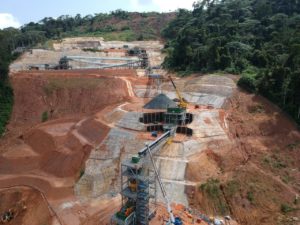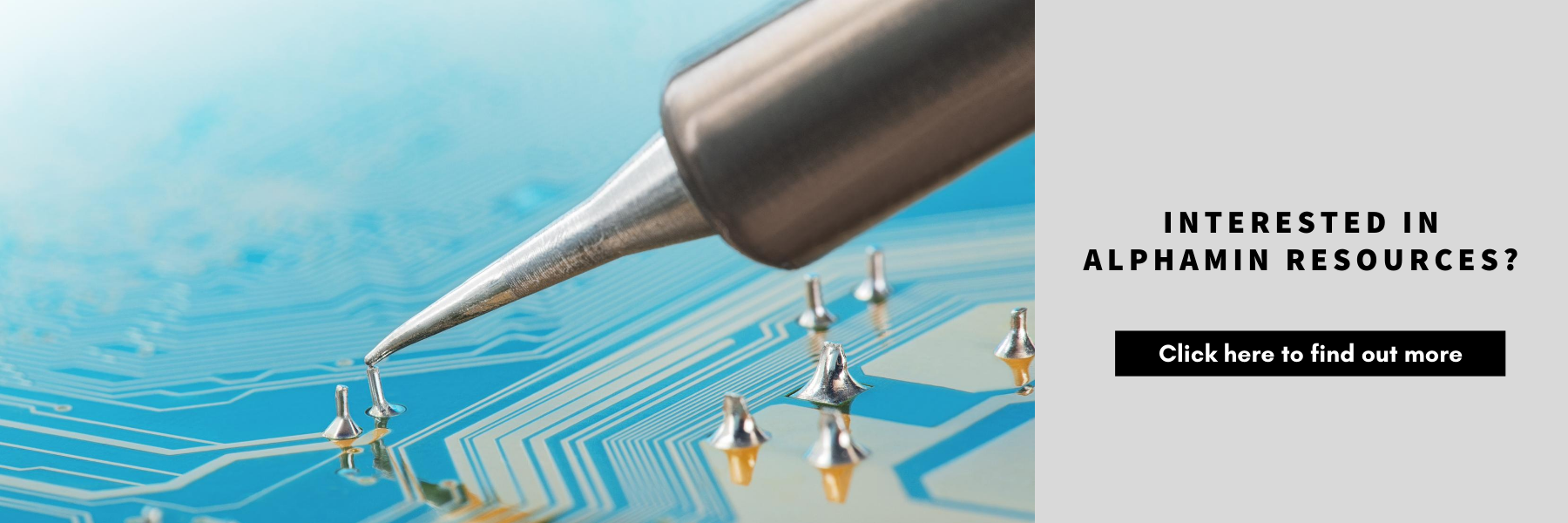Alphamin Resources’ (TSXV:AFM) (JSE: APH) tin mine in the DRC is a good example of what it takes to successfully discover a spectacular ore body in a fragile region, and to develop a mine despite the risks involved.
Building a mine from scratch in the eastern parts of the DRC is not for the fainthearted. It takes courage, determination, good community relationships, an exceptional project team, and, of course, a little luck.
While tin continued its turbulent run this week, Alphamin increased its Run-of-Mine (RoM) for the third quarter ended September 2020. The mine bumped up its volumes with 5% compared to the previous quarter. On the face of it, and for those investors not familiar with the history of Alphamin and the DRC, it sounds like just more impressive results, considering that the average grade at Alphamin is 4%. Few pay homage, however, to the extraordinary effort it took to make the Alphamin chapter one of the greatest stories in the book of mining in Africa.
Firewall against rag-tag soldiers
The extremely rich ore body of Mpama-North is located in one of the most volatile regions of the DRC. To establish the mine, the project team had to negotiate with artisanal miners, community interest groups, rebel forces and rag-tag soldiers from all over the Great Lakes region. When I visited the mine two years ago and construction was in full swing, Richard Robinson, managing director of Alphamin Mining, told me that it was critical that the project had local support and community buy-in. That meant that the project had a firewall of protection around it, which was critical to its success.
Alphamin clearly understood the local and national actors and different interests at play. At the same time, the entire team on the ground was well aware and well informed about the risks and the competitors and their strategies and could therefore develop counter-strategies.
Although it was always going to be difficult to invest in those parts of the DRC, Alphamin managed, analysed, and mitigated the risk successfully. Moreover, those investors with a sufficiently thorough understanding of the real risks to invest in the DRC, found that it was more enticing and secure than in many other African countries, including South Africa and Tanzania, for example.
In a fragile region
It is often those investments where the risk heuristic overstates the real risk that reap the highest rewards – and Alphamin was no exception. Nevertheless, constructing a mine in fragile and post-conflict regions of the world, is never a walk in the park. When the Alphamin team first arrived at Alphamin hill, it was a honeypot of surface-level cassiterite, which created enormous issues relating to conflict minerals. At one stage, there were about 18 different taxes collected by as many different entities, including marauding armed groups and corrupt elements in the Congolese security services and the DRC army. All these groups supported different artisanal miners. At that stage, there were close to 15,000 artisanal miners working the deposits in and around the hill at Alphamin.
These armed groups financed and protected certain artisanal groups and then taxed them. That was an important source of revenue and is what subsequently resulted in people lobbying for conflict-free minerals in the area. Alphamin put in a lot of effort to establish the entire region a mineral-conflict-free zone, which happened soon after their arrival.
Since then, the security dynamics in North Kivu has improved significantly. The United Nations and South African peacekeeping force ended the Rwandan-backed invasion in 2012 and 2013. At the same time, the governance of the mining sector in the eastern part of the DRC improved substantially, mostly because of the introduction of the Dodd Frank Act. Dodd Frank sent a clear message to the authorities that if they do not clean up this sector, the world would not buy their minerals. The government then decided to embrace conflict-free traceability and due diligence. At the same time, the number of artisanal miners at Alphamin started dwindling and in 2017 there were hardly any artisanal miners left. In fact, many of them were employed by Alphamin as part of the team constructing the horizontal shaft. These miners knew every hole and crevice, and their knowledge was key in the development of the underground mine.
A time of peace
The establishment of Alphamin was a significant milestone for the DRC and for the North Kivu and the Walikale regions. It showed that the DRC could support the mining sector in a fragile part of the country characterised by weak governance and conflict since the 1994 genocide in Rwanda, and even before that. The presence of Alphamin stabilised and reinforced peace and at the same time resulted in the development and empowerment of the local communities.
Besides the political, technical, and logistical risks, the projects presented a fair amount of technical and logistical challenges. Nevertheless, as development progressed, it became clear that with a grade of more than 4% tin, it would be hard for punters not to back Alphamin.
What then CEO and now executive director at Alphamin Boris Kamstra and his team, led by chief operating officer Trevor Faber and Robinson, had achieved at Alphamin, is nothing short of astounding. Amongst other significant achievements they hacked and built a high quality road through almost impenetrable forest; built a landing strip; dealt with artisanal and security concerns; rebuilt a bridge after it collapsed in the first year of operation; altered and improved the initial mining method, built and then upgraded the processing plant, negotiated Covid-19 and its lockdown restrictions, and now, against all odds, are delivering extremely high-grade tin to an eager market.
Faber, of course, is known as a formidable character, and it has not been the first mine in a remote area that sees the light under his guidance. He has done it in Katanga and the Copperbelt before, and he did it in Kivu again. But Faber will be the first to admit that getting Alphamin up and running was certainly not an easy task.
Technical and logistic challenges
Initially Alphamin was an infrastructure project with a mine at the end of it. In the beginning there was no road access and the project team had to build a road from scratch with very basic equipment, using local labour. Before the road was completed, equipment and workers were flown to site with helicopters, which made it a costly exercise. Once the road was complete though, most materials and equipment could be transported by truck, although the time it took was weather dependent. If it rained (which it often does in this part of the world), it could take days for a truck load to arrive on site from Goma (about 230km) or from Kisangani, about 450km northeast of Walikale.

Construction of the underground mine started with work on the ventilation shaft and main portal. Because it was difficult to bring in support for the entrance to the ventilation shaft, Faber and his team mounted old drill rods that were used during the exploration phase instead of conventional support. The first part of the entrance of the horizontal shaft was developed manually by a team consisting mostly of ex-artisanal miners that decided to stick around when construction got underway. It took them almost two years to develop the drive.
Alphamin is an exemplary example of the old proverb, ‘where there is a will there is a way’. When Kamstra asked Robinson more than seven years ago (Robinson is a local Congolese and at that stage worked for an NGO) about Alphamin, Robinson replied that they should not touch it. Today Alphamin is pumping out high grade conflict free tin, and Robinson is employed by Alphamin. Alphamin did many things right in Walikale. Through Robinson and Kamstra, they have built strong relationships with the communities, artisanal miners, and government representatives. Faber and his mining team, including the contractors on site, are the best in the business and familiar with the operating environment in the eastern parts of the DRC.
Today Alphamin’s future looks bright, and things seem to get better quarter on quarter. The mine has strengthened its balance sheet significantly and coupled with the steady increase in tin prices, and steady production, Alphamin has launched several growth initiatives during the second quarter of 2020.
These initiatives relate to construction of a fine tin recovery plant and drilling of the Mpama South deposit with a view to establishing a maiden resource. Completion of both projects is part of the company’s two-year strategy to produce approximately 12,000 to 13,000t of contained tin per year and proving additional resource and life-of-mine extensions.
The fine tin recovery plant project is 46% complete and progressing on schedule for commissioning in April 2021. Estimated expenditure at completion is in line with the budget of USD4.6-million. Hard work and dedication have placed Alphamin on the world map, and with a lot more fuel in the tank, be sure to hear more exciting news from the DRC next year.
Peace has returned to Walikale and the guns have gone silent. The only noise on the hill at Alphamin is enthusiastic miners, some of them ex-artisanal miners, mining the richest tin mine on earth. Alphamin is now a beacon of hope and a kingpin in the international tin market. And that, frankly, is enough reason for investors to tick all the boxes.
Want to learn more about Alphamin Resources? Click the image below.








